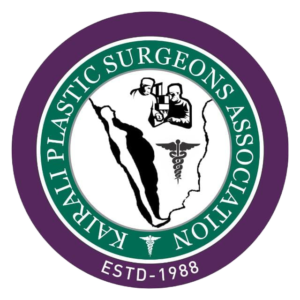
- Abdominal Wall Reconstruction
- Acute Trauma Management
- Breast Reconstruction
- Brachial Plexus and Peripheral Nerve Surgeries
- Burns And Reconstructive Surgeries
- Chest Wall Reconstruction
- Cleft And Craniofacial Surgeries
- Congenital Deformities
- Diabetic Foot & Its Management
- Gender Confirmation Surgeries
- Hand Surgeries
- Head & Neck Reconstruction
- Micro Vascular surgery
- Negative Pressure Wound Therapy
- Pressure Sore And Reconstructive Procedures
- Regenerative Medicine
- Tissue Expansion
INTRODUCTION:
A woman who must undergo total or partial removal of breast as a result of cancer simultaneously faces the threat f the disease and the loss of an important part of her feminine self- image. However, newer medical techniques make it possible for surgeons to create a breast that comes close in form and appearance to natural breast. Post mastectomy reconstruction, a remarkable surgical procedure, cannot only restore the form and appearance of a woman’s breast but can also dramatically improve self esteem and confidence.
Reconstruction may be performed at the time of mastectomy surgery or in some cases may need to be delayed for several months after mastectomy and requires the oncologist and plastic surgeon to work together to formulate a strategy for the same.
Most breast reconstructions involves a series of procedures over time. Reconstruction of nipple and areola is usually done at later date.
PROCEDURE:
AUTOLOGOUS RECONSTRUCTION WITH FLAPS-
Breast reconstruction with autologous flaps incorporates use of tissue either adjacent or from distant site of the patients body to re-create a breast mound. Flaps may be pedicled (wherein tissue remains attached to its original blood supply) or as free tissue transfer using micro- vascular techniques.
Most common flaps include-
TRAM- transverse rectus abdominis myocutaneous flap and the DIEP (deep inferior epigastric artery based flaps) which involve use of lower abdominal wall skin and fat, along with muscle in TRAM flap. These may be used as pedicled or as free flap to create a breast mound.
Gluteal or thigh based flaps involve microsurgical tissue transfer where the flap blood supply is completely detached from original and connected to breast blood vessels.
Free tissue transferis a fairly more complex process and requires more expertise than implants.
Recovery takes longer and scars will be left at both donor site and the reconstructed breast. Also, blood supply to the flap needs to be more closely monitored and hence, requires longer hospital stay.
Advantages include:
- A more natural feel to the breast tissue.
- No concerns of silicone implant
- It has an added benefit of improving the abdominal contour in case of abdominal flaps.
IMPLANTS:
Breast reconstruction with implants incorporates tissue expansion in post mastectomy reconstruction. This technique utilizes creation of a pouch under the chest muscles and subsequent insertion an implant which is serially infiltrated with normal saline over a period of several weeks to months. When skin over the breast area has stretched enough, the expander is removed in a second procedure & a more permanent implant inserted. In some scenarios, an expandable breast implant many be placed in a single sitting. An implant may also be used along with autologous tissue transfer for additional volume.
RISKS
- Mild to moderate pain –usually controlled with oral medication.
- Infection /bleeding as with any procedure
- Longer hospital stay in case of free tissue transfer to ensure vascularity of flap
- Compromised healing due to adjuvant chemo/ radiation
- Firmer consistency usually with implants. Implant rupture
- Requires qualified & experienced technicians to do future mammograms in breasts with implants
RECOVERY:
Depending on the type of procedure, one may go home within one-two days of surgery or may require about 1 week of hospitalization with bed rest and limited activities. Recovery from a combined mastectomy and breast reconstruction or from flap reconstruction alone may take about 6 weeks. If implants are used without flaps, recovery time will be shortened.
